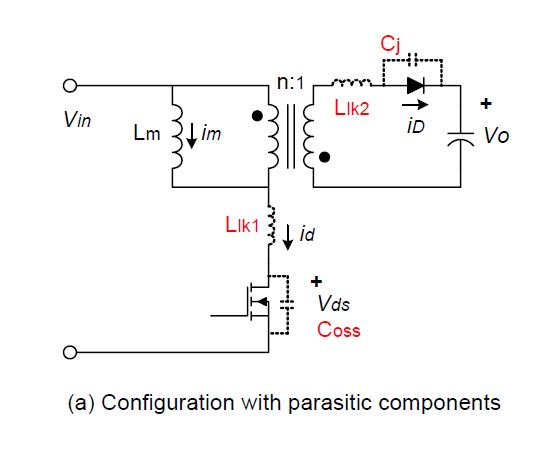یه قسمت از کتاب پرسمن
واقعا لذت بخش بود.چسبید.حیفم اومد از خودم بنویسم، کپی کردم.
یه مقایسه از معایب و مزایای هر یک:
The two modes have significantly different operating properties
and usages. The discontinuous mode, which does not have a
right-half-plane-zero in the transfer function, responds more rapidly
to transient load changes with a lower transient output voltage
spike.
A penalty is paid for this performance, in that the secondary peak
current in the discontinuousmodecan be between two and three times
greater than that in the continuous mode. This is shown in Figures
4.2b and 4.2d. Secondary DC load current is the average of the current
waveshapes in those figures. Also, assuming closely equal “off” times,
it is obvious that the triangle in the discontinuous mode must have a
much larger peak than the trapezoid of the continuous mode for the
two waveshapes to have equal average values.
With larger peak secondary currents, the discontinuous mode has
a larger transient output voltage spike at the instant of turn “off”
(Section 4.3.4.1) and requires a larger LC spike filter to remove it.
Chapter 4: Flyback Converter Topologies 129
Also, the larger secondary peak current at the start of turn “off” in the
discontinuous mode causes a greater RFI problem. Even for moderate
output powers, the very large initial spike of secondary current at
the instant of turn “off” causes a much more severe noise spike on
the output ground bus, because of the large di/dt into the output bus
inductance.
After Pressman A major advantage of the discontinuous mode is that
the secondary rectifier diodes turn “off” under low current stress conditions.
Also they are fully “off” before the next “on” edge of Q1. Hence the problem
of diode reverse recovery is eliminated. This is a major advantage in high
voltage applications as diode reverse recovery current spikes are difficult to
eliminate and are a rich source of RFI. ∼K.B.
Due to the poor form factor, secondary RMS currents in the discontinuous
mode can be much larger than those in the continuous
mode. Hence, the discontinuous mode requires larger secondary wire
size and output filter capacitors with larger ripple current ratings.
The rectifier diodes will also run hotter in the discontinuous mode
because of the larger secondary RMS currents. Further, the primary
peak currents in the discontinuous mode are larger than those in the
continuous mode. For the same output power, the triangle of Figure
4.2a must have a larger peak than the trapezoid of Figure 4.2c. The
consequence is that the discontinuous mode with its larger peak primary
current requires a power transistor of higher current rating and
possibly higher cost. Also, the higher primary current at the turn “off”
edge of Q1 results in a potential for greater RFI problems.
Despite all the disadvantages of the discontinuous mode, it is much
more widely used than the continuous mode. This is so for two reasons.
First, as mentioned above, the discontinuous mode, with an inherently
smaller transformer magnetizing inductance, responds more
quickly and with a lower transient output voltage spike to rapid
changes in output load current or input voltage. Second, because of a
unique characteristic of the continuous mode (its transfer function has
a right-half-plane-zero, to be discussed in a later chapter on feedback
loop stabilization), the error amplifier bandwidth must be drastically
reduced to stabilize the feedback loop.
After Pressman Modern power devices, such as the Power Integration’s
Top Switch range of products, have the “noisy” FET drain part of the chip
isolated from the heat sink tab. This, together with integrated drive and
control circuits, which further reduce radiating area, very much reduces the
RFI problems normally associated with the discontinuous flyback topology.
∼K.B.




